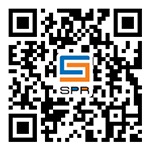[70 YEARS OF GLORY IN RUBBER INDUSTRY] EMANCIPATE THE MIND AND REALIZE THE ALL-ROUND DEVELOPMENT OF
Foreign companies are optimistic about China's tire market. They have invested and set up factories in China, starting from joint ventures, cheap acquisitions, and then sole proprietorship. All the top 10 multinational tire companies in the world have entered China, and other foreign companies have flocked to China. Michelin, Bridgestone, Goodyear, Han Tai, Jiatong and other 23 foreign companies have successively built more than 40 factories by taking advantage of China's preferential policies for foreign investment Jiazi radial tire company. Foreign funded enterprises mainly use Chinese equipment and raw materials, starting from the production of low-grade products, and gradually upgrade with new technology and new products to expand market competitiveness. With the advantages of large companies, big brands and new car supporting, the proportion of products once accounted for about 65% and 30% of the country respectively.
The tire industry is dominated by state-owned, state-owned holding and large-scale private enterprises, which have formed a confrontation with foreign-funded enterprises, promoting each other and developing towards each other in the competition. In 1985, the total output of tires in China was 19.25 million, and radial tires appeared for the first time in the statistics of tire production, with an annual output of 280000; in 1990, the total output of tires was 28.16 million, with an output of 1.18 million radial tires; in 1995, the total output of tires was 55.71 million, with an output of 6.89 million radial tires; in 2000, the total output of tires was 109 million, with an initial breakthrough of 100 million, with 36 million radial tires, with a radial rate In 2005, China's total tire output reached 250 million, of which 141 million were radial tires, with a radial rate of 59.2%. The total tire output surpassed that of the United States, ranking the first in the world. In 2015, the total tire output reached 565 million, with a radial tire output of 511 million, with a radial rate of 91.2%. Digestion, absorption and localization of imported technology and equipment have written a brilliant chapter in the development history of rubber industry.
Other rubber leading products are mainly based on independent research and development, combined with equipment introduction, vigorously implement technical transformation, and product upgrading continues to move forward.
Rubber shoes, as a necessity to improve people's life, are also the first products to be upgraded. In the market, new energy-saving, consumption reducing, beautiful and practical new products, such as sports rubber shoes, leisure shoes, tourist shoes, slope heel women's shoes, have replaced the traditional release shoes and developed towards the middle and high-end products. Qingdao Shuangxing, an old enterprise and famous brand, takes the lead in "going up the mountain and down to the countryside"; the former general manager's subordinate enterprises form Jihua Group to implement intensive management; Rongguang and renben of Ruian, Zhejiang, Zhengfeng and Qiangbu of Sichuan and Chongqing, Feihe and Fuda of Henan, and other private enterprises rise in groups, and the five plates account for about 80% of the production and export of rubber shoes in China. Fujian Jinjiang, Shandong Dongying and other places have formed a joint venture group, which has undertaken the transfer of international famous shoe companies and famous brand products with cold bonded craft shoes. Shanghai's "Huili" sneakers, an old brand of nearly one hundred years, have been active in domestic and foreign markets and become a new favorite. China's rubber shoe industry has taken on a new look. In 1985, the output of rubber shoes in China reached 687 million pairs, and in 1990, it reached 898 million pairs. Although there are ups and downs after that, it has been stable at more than 1 billion pairs, ranking first in the world in terms of production and export.
Conveyor belt is the main part of large-scale and continuous belt conveying in coal mine, wharf, metallurgy, cement, chemical industry and construction industry. As the key point of product renewal and upgrading in the industry, it focuses on R & D and production of polyester nylon belt core conveyor belt and steel wire rope core transport while overcoming the difficulties of production technology, equipment and raw materials of flame-retardant conveyor belt and realizing mass production High strength conveyor belt such as conveyor belt, steel cable and steel mesh; special conveyor belt such as heat-resistant, cold resistant, oil resistant, acid and alkali resistant is developed according to the demand; tubular, retaining edge, pattern, lifting and cover conveyor belt is developed on the product structure. Qingdao XiangLiu, Zhejiang Shuangjian, Sanwei, Wuxi Baotong, Yangquan Oren, Anhui Zhongyi, Fuxin Huanyu and other large private enterprises and state-owned conveyor belt production companies lead the development. From 1985 to 2015, the total annual output of conveyor belt has grown from 59 million square meters to 490 million square meters, with an average growth rate of 7.3%; during the 11th Five Year Plan period, the output of high-strength conveyor belt accounts for about 80%, and the product quality has reached or approached the international advanced level, becoming the world's largest producer and consumer.
The transmission belt is not only a branch of the belt, but also an indispensable mechanical part, which is widely used in automobile, machinery, textile, home appliances, office automation, light industry, agricultural machinery and other fields. In the 1980s, belt enterprises in Wuxi, Luoyang, Guiyang, Jiamusi and other places introduced edge cutting drive belt, agricultural machinery V-belt and other production technologies and equipment, and then independently innovated on the basis of localization, implemented the development of domestic drive belt specifications and varieties in the direction of diversification and specialization, and emerged backbone private enterprises such as Zhejiang sanlishi and Henan Jiulong, with narrow V-belt, wide V-belt and wide angle belt New products such as V-belt, V-belt, V-belt, V-belt, synchronous belt and polyester rope V-belt are the main products, which completely get rid of the backward technology and products of traditional ordinary V-belt and ordinary / flat belt. Nylon and polyester rope structure products account for more than 90% of the total V-belt. The fatigue life of HM variable speed V-belt exceeds 100 hours, and its service life is multiplied. The reverse forming technology has been popularized. The development and application of drum curing machine, constant tension wire rope forming machine, high-precision cutting machine, belt barrel grinder, wedge grinder, short fiber film cutting and splicing machine have brought the production and process equipment of transmission belt to a new level. The total output of V-belt in China was 245 million a meters in 1985, 684 million a meters in 1995, 1.725 billion a meters in 2010, and 2.18 billion a meters in 2015. All the old structural products have been updated.
Rubber tube products have derived two categories of rubber tube and resin tube, five types of general-purpose, high-pressure, automobile, petroleum and special-purpose rubber tube, and have entered the era of high-pressure rubber tube and automobile special rubber tube. Weaving and winding structure represents the production and technical level. Tianjin Pengling, Zhejiang JUNHE, Sichuan Chuanhuan and other new private enterprises lead the development. The national rubber tube production has grown from 106 million standard meters in 1985 to 1.39 billion standard meters in 2015, with an average annual growth of 8.96%.
Rubber products have sprung up, ranging from household ring cushions to aerospace, high-speed rail engineering, automobile manufacturing, marine engineering and national defense construction. The application of rubber products is increasingly extensive, and the requirements for quality, variety and specification are increasingly high. Raw materials are also greatly diversified. As the focus of product upgrading, large-scale enterprises with an output value of more than 10 billion in the era of Anhui Zhongding and Zhuzhou emerged in the industry, forming intensive manufacturing bases for three private enterprises in Ninghai, Wenzhou and Hengshui, Zhejiang Province. In addition, scientific research units such as Northwest Rubber Research Institute and Shenyang Rubber Research Institute under the Ministry of chemical industry after the restructuring have jointly become the innovation and production subject of the industry.
Ninghai base has cultivated 6 national high-tech enterprises, 2 National recognized laboratories, 2 provincial high-tech R & D centers, 5 municipal engineering technology centers, developed more than 300 new technologies, new products and new processes, and the R & D cost accounts for about 4% of the output value. The supporting projects for medium and high-grade automobiles are also listed in the national and local key torch plans. Wenzhou base has more than 300 manufacturing enterprises of production, trade and special equipment. The self-developed continuous production Prefabricated rubber runway is exported to France and other countries, becoming the main force of local industry. Hengshui engineering rubber manufacturing base was first built, and its products cover basin type rubber bearing, plate type rubber bearing and rubber expansion device
- Prev:没有了!
- Next:CLASSIFICATION AND APPLICATION OF RUBBER PRODUCTS


